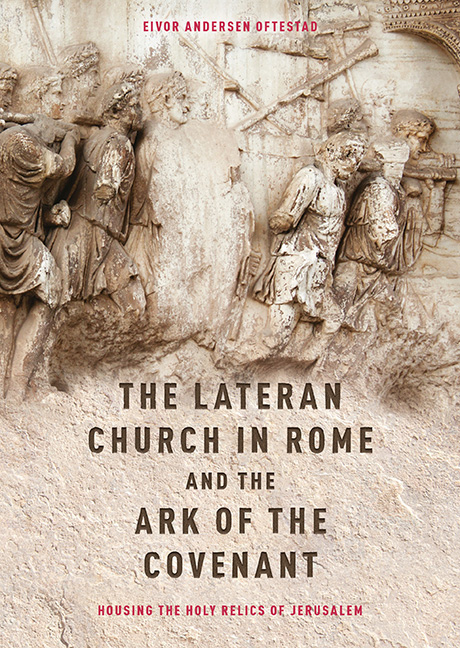 The Lateran Church in Rome and the Ark of the Covenant: Housing the Holy Relics of Jerusalem
The Lateran Church in Rome and the Ark of the Covenant: Housing the Holy Relics of Jerusalem Published online by Cambridge University Press: 31 August 2019
In that he saith, A new covenant, he hath made the first old. Now that which decayeth and waxeth old is ready to vanish away.
The House of God
According to the Scriptures, the temple was the house of God and characterized by two basic qualities: first, God dwelt within this house – it was the place of his throne – and, second, it was served by a hierarchically ordered priesthood set apart from the rest of the community. These qualities made the temple the exclusive meeting place between God and humanity. The priesthood functioned as mediators of God's presence and the high priest represented the summit of mediation and sacerdotal authority. Important aspects of the liturgical life at the Lateran Church were shaped according to the model of the temple but also as a superior continuation. The same can be argued for the papal private chapel – the oratory of San Lorenzo – as described by Nikolaus Maniacutius in his sermon about the image of the Saviour from about 1145.
Two questions will structure the investigation below. First, we will explore how the priesthood of the Lateran understood itself in relation to the priesthood of the Jewish temple. The starting point for this will be the ritual of Maundy Thursday as described by the Ordo of the Lateran canons by Prior Bernard (composed between 1139 and 1145). This text will be read in light of texts from the tradition of the regular canons. Secondly we will ask how, or in what way, the presence of God at the Lateran Church – and at the papal private chapel – was conceived as surpassing the presence of God at the temple. The answer, provided in this chapter and developed in Chapter 7, will be based on the sources of the dedication feast, Maniacutius’ sermon and John the Deacon's extended version of the Descriptio (1159–1181), which also summarizes an increased emphasis on the temple objects.
The sources of Chapters 6 and 7 are dated several decades after the first version of the Descriptio, all from around the mid-twelfth century. They provide a glimpse of insider perspectives on the Lateran liturgy and an understanding of the reception history of the Descriptio. The aim of the chapters is thus to analyse the promotion of the basilica according to the concept of translatio templi.
To save this book to your Kindle, first ensure [email protected] is added to your Approved Personal Document E-mail List under your Personal Document Settings on the Manage Your Content and Devices page of your Amazon account. Then enter the ‘name’ part of your Kindle email address below. Find out more about saving to your Kindle.
Note you can select to save to either the @free.kindle.com or @kindle.com variations. ‘@free.kindle.com’ emails are free but can only be saved to your device when it is connected to wi-fi. ‘@kindle.com’ emails can be delivered even when you are not connected to wi-fi, but note that service fees apply.
Find out more about the Kindle Personal Document Service.
To save content items to your account, please confirm that you agree to abide by our usage policies. If this is the first time you use this feature, you will be asked to authorise Cambridge Core to connect with your account. Find out more about saving content to Dropbox.
To save content items to your account, please confirm that you agree to abide by our usage policies. If this is the first time you use this feature, you will be asked to authorise Cambridge Core to connect with your account. Find out more about saving content to Google Drive.